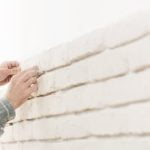USDA Home Improvement Loans provide homeowners in rural areas with the opportunity to enhance or repair their properties. These loans are specifically designed to assist low-income families in improving the livability and sustainability of their homes. However, not all homes qualify for these loans, as they must meet certain eligibility criteria.
A USDA Home Improvement Loan is a type of government-backed loan program that aims to improve living conditions in rural communities. The primary function of these loans is to provide funds for necessary renovations or repairs that will enhance the safety, efficiency, and overall quality of a home. By addressing critical issues such as outdated infrastructure or energy inefficiency, homeowners can enjoy a more comfortable and sustainable living environment.
In order to be eligible for USDA Home Improvement Loans, homeowners must meet certain criteria. These include income limits, property location within a designated rural area, and the applicant’s creditworthiness. By ensuring that applicants meet these requirements, the USDA aims to allocate resources accurately and assist those most in need.
What is a USDA Home Improvement Loan?
A USDA Home Improvement Loan is a type of loan provided by the United States Department of Agriculture (USDA) for homeowners in rural areas to make improvements or repairs to their homes. These loans are intended to help homeowners enhance their quality of life and maintain the value of their properties. The primary function of a USDA Home Improvement Loan is to provide financial assistance for projects that promote health, safety, and energy efficiency in rural homes.
The intended use of USDA Home Improvement Loans is to address essential needs in residential properties located in eligible rural areas. These loans can be used for a wide range of renovations and improvements, including repairing and replacing faulty plumbing or electrical systems, updating outdated kitchens or bathrooms, adding energy-efficient features to decrease utility costs, and enhancing accessibility for individuals with disabilities.
To qualify for a USDA Home Improvement Loan, there are certain eligibility criteria that homeowners must meet. One of the key requirements is income limits. The applicant’s household income should not exceed 115% of the median income for the area where they reside. Additionally, the property being improved must be located in an eligible rural area as specified by the USDA.
Moreover, creditworthiness plays a crucial role in determining eligibility for these loans. Applicants should have an acceptable credit history and demonstrate their ability to repay the loan. It is important to note that while these loans are primarily targeted towards low-income households, individuals with higher incomes may still be eligible if they meet other program requirements.
Overall, understanding what a USDA Home Improvement Loan entails and meeting its eligibility criteria are essential steps towards obtaining financial assistance for improving one’s rural home. By familiarizing themselves with these factors, homeowners can determine whether they qualify for this program and take advantage of the benefits it offers to enhance their living conditions and increase the value of their properties.
Eligibility Criteria for USDA Home Improvement Loans
To qualify for USDA Home Improvement Loans, there are certain eligibility criteria that applicants must meet. These criteria include factors such as income limits, property location, and creditworthiness. By adhering to these requirements, individuals can increase their chances of securing this type of loan for enhancing or repairing their homes in rural areas.
One of the key eligibility criteria for USDA Home Improvement Loans is meeting the income limits set by the program. These limits vary depending on the location of the property and the number of people living in the household. The purpose of these income limits is to ensure that the loans are targeted towards individuals or families with moderate incomes who might otherwise struggle to afford necessary home improvements.
Another important requirement for USDA Home Improvement Loans is that the property must be located in a qualified rural area as defined by the United States Department of Agriculture (USDA). This requirement ensures that these loans are used to enhance homes in rural communities and promote economic development in those areas.
In addition to income limits and property location, applicants must also demonstrate creditworthiness to be eligible for USDA Home Improvement Loans. While specific credit score requirements are not stated, lenders typically look for borrowers with a good credit history and a responsible repayment record. This helps ensure that borrowers have a stable financial background and can responsibly manage their loan payments.
By meeting these eligibility criteria, individuals can access USDA Home Improvement Loans to enhance their properties and make necessary repairs in rural areas. It is important for potential borrowers to thoroughly review and understand these requirements before applying for this type of loan.
- Meet income limits set by the program
- Property must be located in a qualified rural area
- Demonstrate creditworthiness through good credit history
Property Type
A single-family home is one of the property types that qualify for USDA Home Improvement Loans. These loans are designed to assist homeowners in rural areas with financing necessary repairs or enhancements to their properties. When it comes to single-family homes, there are specific requirements that must be met to be eligible for these loans.
Firstly, it is important to note that the property must be the primary residence of the applicant. This means that the homeowner must live in the home and cannot use the loan for investment or rental properties. Additionally, the existing condition of the property plays a role in determining eligibility. The USDA wants to ensure that these loans are used for improving properties that are livable and safe.
To qualify for a USDA Home Improvement Loan, applicants must meet income guidelines set by the USDA. These guidelines take into account the number of people living in the home and are based on county-level limits. The purpose of these income limits is to target low – and moderate-income families who may not have access to traditional financing options.
In terms of creditworthiness, applicants will typically need a credit score of 640 or higher to be considered eligible for a USDA Home Improvement Loan. However, there may be some flexibility in credit requirements depending on other factors such as payment history and debt-to-income ratio.
Overall, single-family homes can benefit from USDA Home Improvement Loans as long as they meet the required criteria outlined by the USDA. By providing funding for necessary repairs or enhancements, these loans can help homeowners improve their homes and enhance their quality of life in rural areas.
| Eligibility Criteria | Requirements |
|---|---|
| Primary Residence | The property must be the primary residence of the applicant. |
| Existing Condition | The property must be in a livable and safe condition. |
| Income Limits | Applicants must meet income guidelines set by the USDA based on county-level limits. |
| Creditworthiness | Applicants generally need a credit score of 640 or higher, but flexibility may exist based on other factors. |
Property Type
Manufactured and modular homes are another type of property that may qualify for USDA Home Improvement Loans. These types of homes are prefabricated structures that are built off-site and then transported to the desired location. Manufactured homes are constructed on a metal frame and often placed on a permanent foundation, while modular homes consist of multiple sections or modules that are assembled on-site.
To be eligible for a USDA Home Improvement Loan, manufactured and modular homes must meet certain requirements. First, the home must be classified as real estate and not personal property. This means that it should be affixed to a permanent foundation on land owned by the applicant. Additionally, the home must meet local building codes and HUD standards.
In order to obtain a USDA Home Improvement Loan for a manufactured or modular home, the homeowner will need to provide documentation such as proof of ownership, proof of income, proof of insurance coverage on the home, and evidence that property taxes are up to date. It’s important to note that USDA loans cannot be used to purchase or install new manufactured or modular homes, but they can be used for improvements or repairs on existing ones.
| Eligibility Criteria | Details |
|---|---|
| Property Classification | Must be classified as real estate |
| Foundation Requirement | The home must be on a permanent foundation |
| Building Codes | The home must meet local building codes and HUD standards |
By taking advantage of USDA Home Improvement Loans, homeowners with manufactured or modular properties in rural areas can access the funds they need to make necessary repairs or improvements. These loans provide individuals and families with an opportunity to enhance their living conditions, increase the value of their homes, and contribute to the overall development of rural communities.
Property Type
Condominiums and cooperative housing projects are another property type that may qualify for USDA Home Improvement Loans. These types of properties have specific eligibility criteria that must be met in order to be considered for these loans.
For condominiums, the project must be approved by the USDA as a Rural Housing Service (RHS) Condominium Project. This means that the condominium development must meet certain requirements set forth by the USDA in order to be eligible for financing. These requirements may include things like minimum occupancy rates, financial stability of the condominium association, and adherence to USDA regulations regarding management and maintenance.
Cooperative housing projects also have their own set of eligibility criteria. The cooperative project must be considered a “nonprofit nonstock corporation” and meet other guidelines established by the USDA. Additionally, the cooperative housing must be located in an eligible rural area according to USDA maps.
It’s important for potential borrowers who own or are considering purchasing condominiums or cooperative housing projects in rural areas to research and understand the specific eligibility requirements set forth by the USDA. By meeting these requirements, they may be able to access USDA Home Improvement Loans to make necessary repairs or enhancements to their homes.
Property Type
Multi-Family Homes and Rental Properties are an important category of properties that may qualify for USDA Home Improvement Loans. These types of properties include apartment buildings, duplexes, triplexes, and quadruplexes. While the eligibility criteria for multi-family homes and rental properties can be more stringent compared to other property types, it is still possible to obtain a USDA Home Improvement Loan for these types of properties under certain circumstances.
Eligibility Requirements for Multi-Family Homes and Rental Properties
To qualify for a USDA Home Improvement Loan for multi-family homes and rental properties, there are some specific requirements that applicants must meet. Firstly, the property must be located in a rural area as designated by the USDA. Additionally, the property must comply with all local building codes and standards to ensure its safety and habitability.
Another important factor is the applicant’s creditworthiness. The USDA requires applicants to have a satisfactory credit history with a minimum credit score of 640 or higher. This requirement is crucial as it reflects the applicant’s ability to manage their financial obligations responsibly.
Rental Properties Eligibility
Rental properties may also qualify for a USDA Home Improvement Loan but under specific circumstances. Generally, rental properties need to demonstrate their value in promoting affordable housing in rural areas. Rental property owners will need to provide evidence that their property serves low – or moderate-income tenants who would otherwise struggle to find affordable housing options.
It is worth noting that while rental properties can be eligible for USDA Home Improvement Loans, these loans cannot be used to finance luxury upgrades or improvements solely benefiting the owner’s personal use or profits.
By meeting the eligibility criteria outlined by USDA for multi-family homes and rental properties, owners can access funds needed for repairs or enhancements that contribute positively to rural communities’ housing needs. Whether it is improving energy efficiency or ensuring safe living conditions, these loans can play a vital role in enhancing the overall quality of multi-family homes and rental properties in rural areas.
Renovation Scope
One of the key considerations when applying for a USDA Home Improvement Loan is the scope of renovation projects that are allowed under the program. To ensure that these loans are used for their intended purpose, the USDA has an approved project list which specifies the types of renovations or improvements that are eligible for financing.
The approved project list includes a wide range of renovations and improvements that aim to enhance the safety, livability, and energy efficiency of rural homes. Some examples of eligible projects include adding energy-efficient features such as solar panels or geothermal systems, repairing essential infrastructure such as roofs or foundations, installing accessibility modifications to accommodate individuals with disabilities, or updating plumbing and electrical systems.
It is important to note that while there is a comprehensive list of approved projects, it is always recommended to consult with your USDA-approved lender before undertaking any construction or renovation work. They can provide guidance on whether your desired renovation falls within the scope of eligible projects and can also help you navigate any specific requirements or regulations that may apply.
By adhering to the approved project list, homeowners can ensure that they are making improvements that meet USDA guidelines and are in compliance with regulations. This not only helps protect the homeowner’s investment but also contributes to maintaining safe and sustainable housing in rural areas.
How to Apply for a USDA Home Improvement Loan
Applying for a USDA Home Improvement Loan is a straightforward process that involves several steps. It is important to be prepared and organized in order to increase your chances of approval and secure the funds you need for your home improvement project.
First, gather all the necessary documents before starting the application process. These documents typically include proof of income, such as pay stubs or tax returns, proof of residency, such as utility bills or a lease agreement, and documentation regarding the home improvement project you plan to undertake. It is also important to have information about the property, including its location and current condition.
Next, research potential financial institutions that offer USDA Home Improvement Loans. Look for lenders who have experience with these types of loans and understand the eligibility criteria. You can contact local banks, credit unions, or mortgage lenders to inquire about their loan programs and requirements.
Once you have identified a suitable lender, you can begin the application process. Fill out the necessary forms accurately and completely. Be sure to include all requested information and provide any additional documentation required by the lender. Pay attention to details such as loan amount, repayment terms, and interest rates.
After submitting your application, it will undergo a thorough review by the lender. This review includes an assessment of your creditworthiness, income verification, property evaluation, and compliance with USDA regulations. The lender will determine whether you meet all eligibility criteria for a USDA Home Improvement Loan.
If your application is approved, you will receive an offer from the lender outlining the loan amount and terms. Carefully review this offer to ensure it meets your needs before accepting it. If you accept the offer, you will proceed with closing on the loan and signing any necessary legal documents.
Conclusion
In conclusion, USDA Home Improvement Loans provide a valuable opportunity for homeowners in rural areas to enhance and repair their properties. Understanding the eligibility criteria is crucial in order to take advantage of these loans. The key requirements include meeting income limits, living in an eligible property location, and demonstrating creditworthiness.
When it comes to property types, single-family homes are eligible for USDA Home Improvement Loans as long as they are used as primary residences and meet certain condition standards. Manufactured and modular homes also have the potential to qualify, with specific guidelines outlined by the USDA. Condominiums and cooperative housing projects must adhere to USDA regulations to be considered eligible.
Multi-family homes may also be eligible for these loans under certain circumstances, while rental properties can qualify if they meet specific requirements. When it comes to renovation scope, there is an approved project list that outlines the types of improvements allowed by USDA Home Improvement Loans. Examples include adding energy-efficient features or repairing essential infrastructure.
To apply for a USDA Home Improvement Loan, it is important to follow the necessary steps and gather all required documents. The application process can typically be completed through various financial institutions that participate in this program. By exploring the possibilities offered by these loans, homeowners can improve their rural properties and create comfortable and sustainable living spaces.
Frequently Asked Questions
How accurate is USDA eligibility map?
The accuracy of the USDA eligibility map can vary depending on various factors. Generally, the map provides a helpful overview of eligible areas for USDA loans, which are specifically designed for rural and suburban homebuyers.
However, it is important to note that the boundaries on the map may not be perfectly precise, and there could be some areas that are incorrectly classified as eligible or ineligible. Therefore, it is always advisable to double-check with local USDA offices or lenders to confirm eligibility in a specific location.
Can my boyfriend live with me if I have a USDA loan?
The eligibility requirements for a USDA loan pertain primarily to the property being financed rather than the individuals living in it. While a boyfriend can technically live with someone who has a USDA loan, it is important to remember that USDA loans are intended for primary residence purposes.
This means that any non-borrower residing in the home would need to meet certain occupancy guidelines specified by the lender or loan program. Additionally, there may be certain restrictions on renting out portions of the property if you have a USDA loan.
Is FHA better than USDA?
Whether FHA is better than USDA depends on individual circumstances and preferences. Both FHA (Federal Housing Administration) and USDA (United States Department of Agriculture) offer loan programs with distinct features and eligibility criteria.

I’m thrilled to have you here as a part of the Remodeling Top community. This is where my journey as an architect and remodeling enthusiast intersects with your passion for transforming houses into dream homes.





